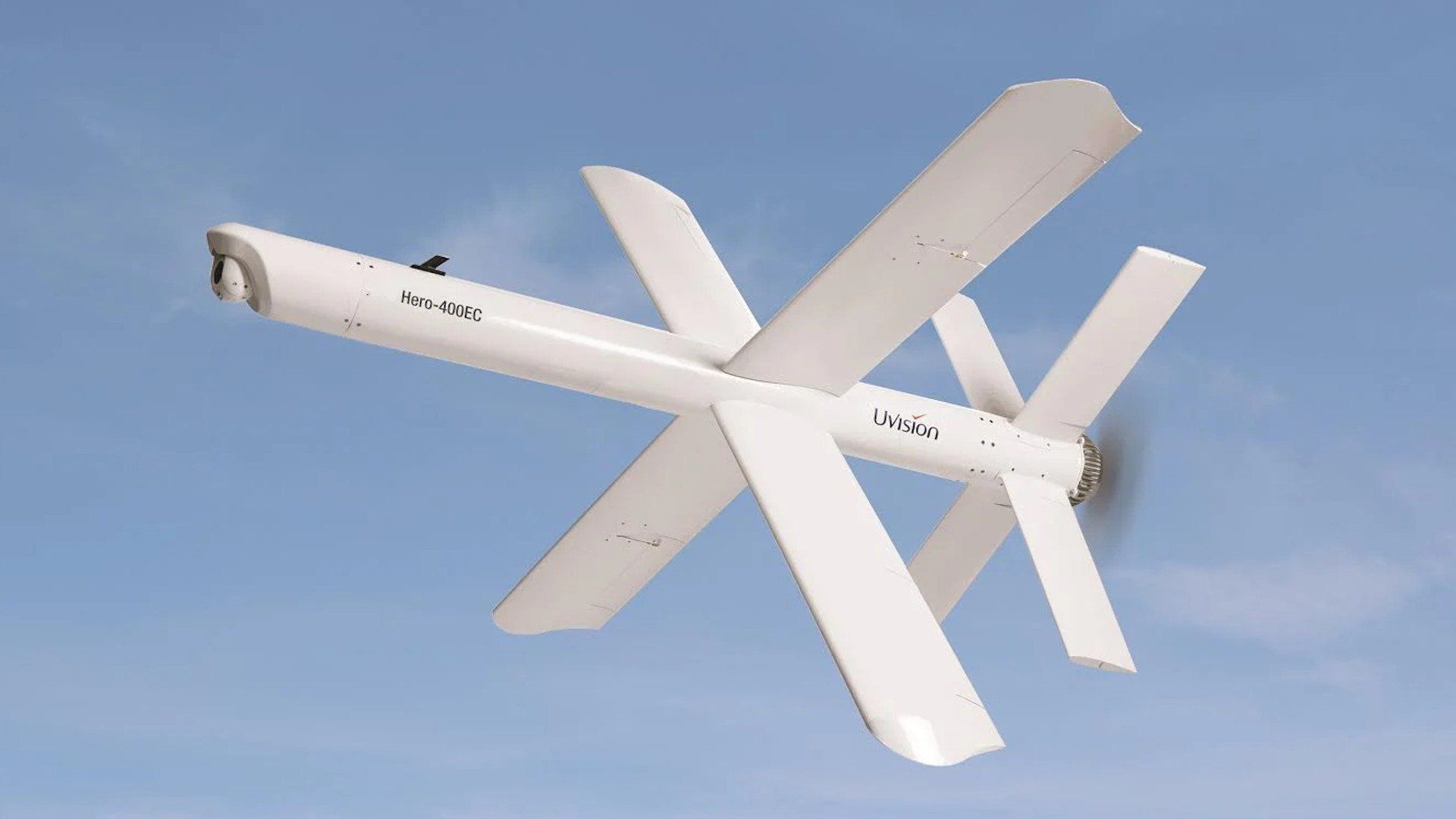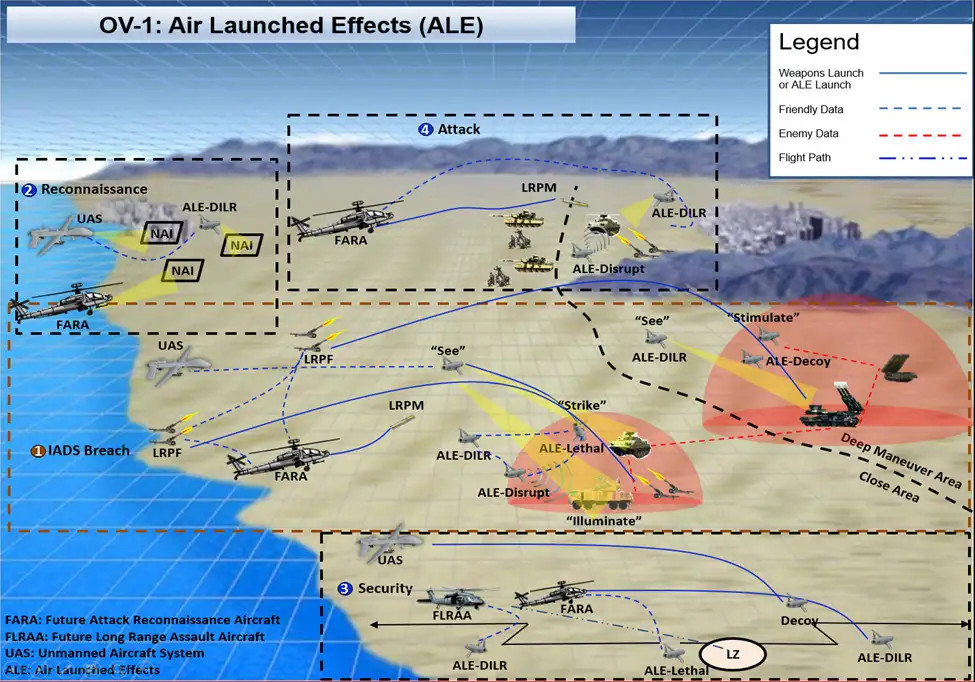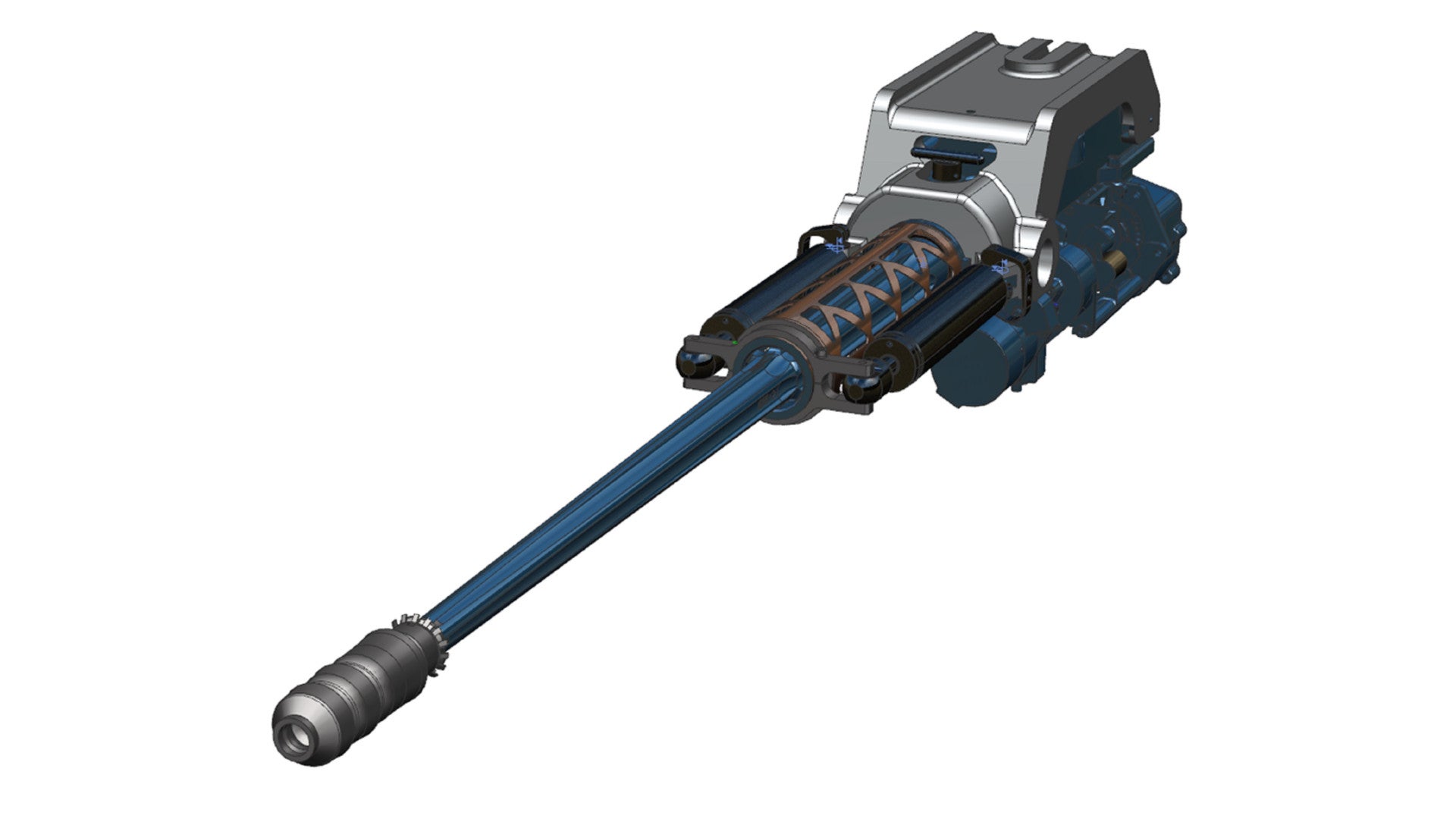Northrop Grumman is working on a new loitering munition, a type of weapon also commonly known as a “suicide drone,” as well as other technologies, to meet requirements the U.S. Army has outlined as part of its Air Launch Effects program, or ALE. The company is also developing a 20mm derivative of the 30mm M230 chain gun, dubbed Sky Viper. All of this is related to the Army’s Future Vertical Lift effort, or FVL, which is seeking various types of new rotary-wing aircraft with advanced capabilities to replace various existing helicopters that the service operates now.
The Virginia-headquartered defense contractor provided information about the suicide drone and automatic cannon during a media roundtable on March 10, 2021. Northrop Grumman is not, at least at present, leading the development of an actual aircraft to meet any existing FVL requirements. The two major programs underway now are the Future Attack Reconnaissance Aircraft (FARA), a new armed scout helicopter, and the Future Long-Range Assault Aircraft (FLRAA), a replacement for the UH-60 Black Hawk family.

However, the company’s various divisions are working with the Army in relation to a host of new and existing systems that could be added to any future helicopters the service acquires. This also includes radars, directional infrared countermeasures systems (DIRCM), navigation and communications systems, and networking capabilities, as well as an open-architecture mission systems “backbone,” known as the Modular Open Systems Architecture (MOSA), to bring all of that together.
The loitering munition that Northrop Grumman is pitching for the ALE program’s requirement for a “lethal” system is a hybrid design that blends technology it has developed with components of the Hero 120 and Hero 400 suicide drones from Israel’s UVision. The resulting system is called the Hero ALE and will be built in the United States, along with other Hero-series designs, by UVision USA, a wholly-owned, U.S.-based subsidiary of UVision.
The Hero 120 is the largest offering in UVision’s “tactical” line of loitering munitions, weighing around 27 and a half pounds, including a 10-pound warhead. It uses an electric motor to drive a propeller at the rear and has a maximum endurance of around 60 minutes.

UVision offers two Hero 400 designs, both of which are part of its “operational” line, meant for engaging targets outside of an immediate tactical environment. The standard Hero 400, which uses a gasoline-powered engine, and the electrically-powered Hero 400EC, weigh just over 88 pounds. The Hero 400EC is effectively a scaled-up version of the smaller Hero drones, while the Hero 400 has a distinctly different planform.

Loitering munitions, which Israeli companies pioneered and continue to be leaders in the development of, are, in general, a sort of hybrid between traditional missiles and small unmanned aircraft. Many designs are recoverable, as well, allowing for their refurbishment and reuse if they do not find a target during the course of their flight.
They often feature a man-in-the-loop-type control system that allows an operator to see what the drone sees through its onboard sensors, offering surveillance and reconnaissance, as well as strike capabilities. Each design in UVision’s Hero family has a sensor turret in the nose with both electro-optical and infrared cameras that can be used for surveillance, as well as zeroing in on a target.
This arrangement also allows the user to make finely-tuned course adjustments right up until the moment of impact, offering added accuracy, even against moving targets. In addition, it means that a strike can be more readily aborted, almost at the last possible moment, should circumstances change, such as the sudden appearance of innocent bystanders.
Loitering munitions can also be equipped with guidance packages that allow them to autonomously or semi-autonomously engage targets, including ones in motion, using various kinds of sensors. They could be directed to strike a specific fixed location, as well. They can also be designed to zero in on electromagnetic emissions, such as those from radars or communications nodes, something that has made them particularly useful for suppressing and destroying enemy air defenses, missions collectively referred to as SEAD/DEAD. This is one of the mission sets that the Army has already outlined for its future ALEs.

It’s not clear which Hero 400 type Northrop Grumman is leveraging for the Hero ALE, but UVision says that both the Hero 400 and Hero 400EC have a maximum range of just over 93 miles. However, the Hero 400 has a significantly longer endurance, at up to four hours of flying time, compared to the Hero 400EC’s ability to stay aloft for no more than two hours.
However, Northrop Grumman did say that it would compatible with the Army’s existing M299 and M310 missile launchers. These are four and two-rail launchers, respectively, that the service primarily uses at present to fire Hellfire missiles, though they are compatible with other weapons, including the new Joint Air-to-Ground Missile (JAGM).
Currently, these launchers are most commonly associated with the AH-64 Apache attack helicopter, though they are also used on the elite 160th Special Operations aviation Regiment’s (SOAR) MH-60L/M Black Hawks in the armed Direct Action Penetrator (DAP) configuration. U.S. Marine Corps AH-1Z Viper attack helicopters and U.S. Navy MH-60R and MH-60S Seahawks, among other types worldwide, also use them, again primarily to launch Hellfires.

UVision’s website says that the Hero 400EC can be employed from an unspecified “rail launcher,” as well as a fully-encapsulated launch canister. The launch options for the Hero 400 are only described as “launcher/canister.”
Northrop Grumman did not offer any details about the Hero ALE’s expected performance or other capabilities, but did say that minimum launch altitude would be determined by how powerful the launching aircraft’s rotorwash is, which would push the drone down, at least to some degree, as it leaves the rail. To help compensate for this, the Hero ALE will have a small rocket booster to immediately accelerate it to a speed of 120 feet per second for a short time to get it out from under the rotorwash.
The Army’s ALE requirements, which you can read more about in detail in this past War Zone piece, also call for a heavy emphasis on swarming capabilities. Those swarms could also include air-launched drones with non-kinetic payloads, as well. During the media roundtable, Northrop Grumman also disclosed that it is providing a payload called Small Wonder as part of the development of other ALEs to fulfill the program’s requirements for systems able to “detect, identify, locate, and report” on targets and act as decoys. Details about Small Wonder are limited, but the company said that it has electronic support measures (ESM), electronic attack, and anti-radiation homing capabilities. Electronic warfare, in general, including as a capability for swarming drones, is a growing area of interest across the U.S. military, as well as other armed forces around the world.
Details about the Sky Viper chain gun are also limited at present. The weapon is, as already noted, based on the larger M230 design, which is most notably the primary weapon on the AH-64 Apache. Northrop Grumman Innovation Systems, previously Orbital ATK, does offer a lighter-weight, low-recoil M230LF version, but the Army has a requirement for a 20mm weapon as part of its FARA program.

Northrop Grumman says that its focus during the development of Sky Viper has been on increased accuracy, as well as lighter weight and lower recoil. The company says the gun will have a higher rate of fire than the M230, which spits out shells at a rate of around 625 rounds per minute, which could help make it more accurate. A faster firing gun means projectiles would leave the barrel in more rapid succession, limiting their exposure to recoil forces during relatively short, controlled bursts.

A high degree of accuracy could also mean that any helicopter armed with Sky Viper might not need to carry as much ammunition, since it would be able to use the rounds it does have more effectively and efficiently. This argument, coupled with the compact nature of the gun itself due to its lightweight, low-recoil design, could make it very attractive for FARA designs, where available physical space and payload capacity, which could be limited due to stealthy design features, will also be needed for the integration of various other advanced systems.
Northrop Grumman also says it will be developing a new family of 20mm ammunition to go along with Sky Viper. This includes work on rounds optimized for engaging small drones, which is already a real and growing battlefield threat. The company has already tested 30mm air-bursting rounds in the counter-drone role in the past.

More details about both the Hero ALE and Sky Viper are likely to emerge in the coming months. Northrop Grumman says it is looking to demonstrate the loitering munition’s capabilities in September. It has also done risk reduction work on non-firing prototypes of the chain gun and is now building its first fully-functional prototype.
With regards to Sky Viper specifically, it’s important to note that the Army is presently planning to use the XM915, a three-barrel Gatling-type cannon from General Dynamics, as part of the testing of prototype FARA designs from Bell and Sikorsky, the latter of which is now a subsidiary of Lockheed Martin. However, Northrop Grumman says it is coordinating the development of its cannon with the Army as a possible competing offering on whatever helicopter the service ultimately chooses as the winner of the FARA competition.
Sky Viper, as well as the work Northrop Grumman is doing in support of the ALE effort, could be of interest to other U.S. military services, as well as foreign customers, as well. The U.S. Marine Corps has expressed interest in FLRAA in the past and is running a separate program, called the Attack Utility Replacement Aircraft (AURA), seeking possible replacements for its AH-1Z Viper attack helicopters and UH-1Y Venom armed light utility helicopters. Earlier this year, the U.S. Navy also announced the start of its search for possible replacements for its MH-60R/S Seahawks, as well as its MQ-8B/C Fire Scout drone helicopters. All of these efforts are likely to be informed by the Army’s FVL initiative, as well as the various subsystems being developed to support that program, at least on some level.
We will definitely be keeping our eyes out for new details about the Hero ALE, Sky Viper, and other projects that Northrop Grumman, and others, are working on as part of the broader and rapidly developing FVL initiative.
Contact the author: joe@thedrive.com
